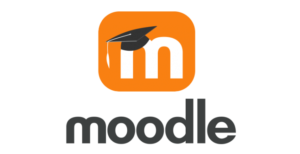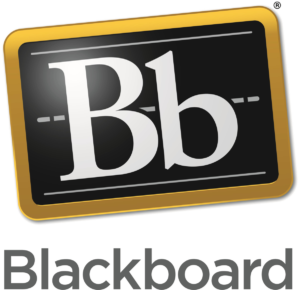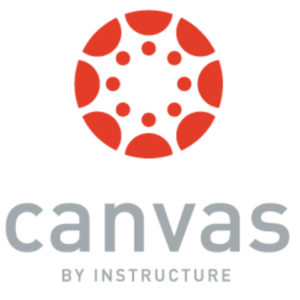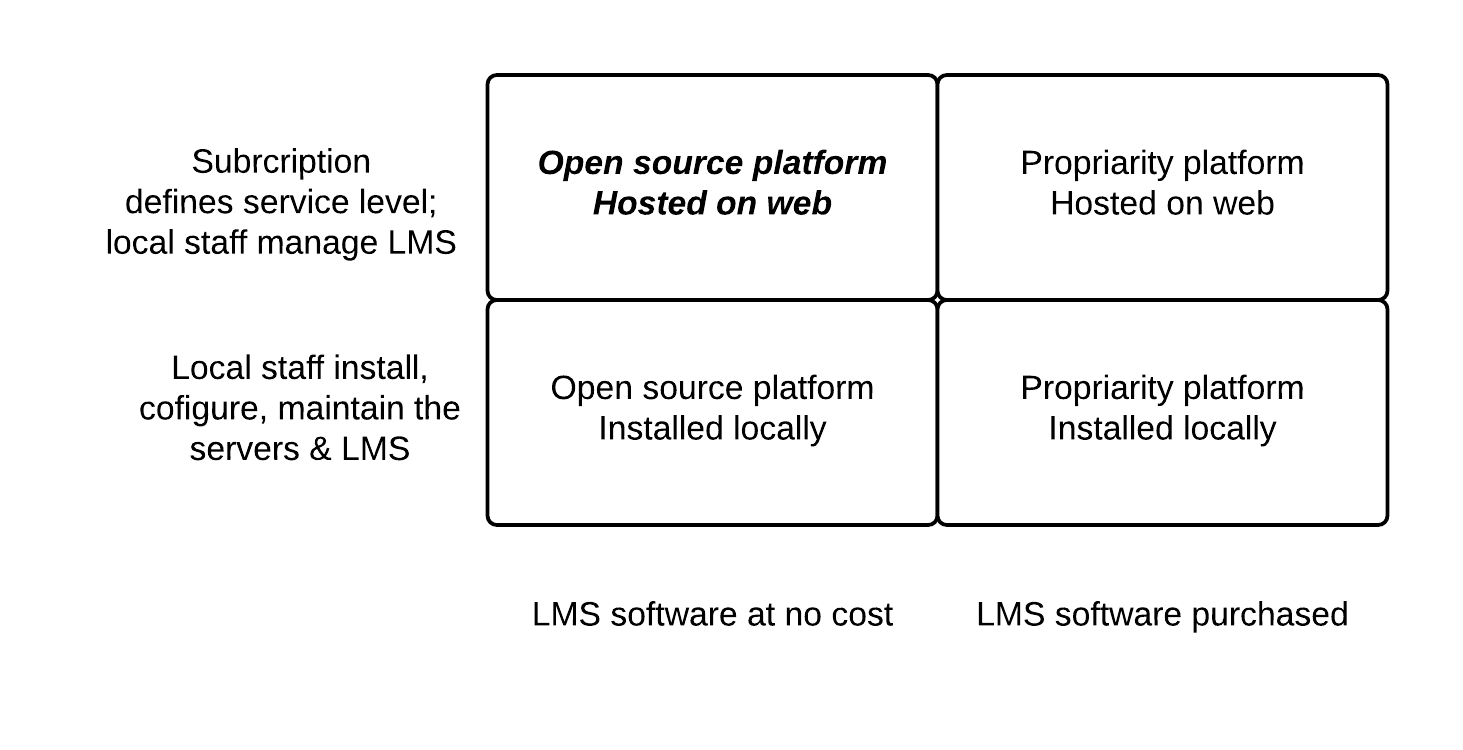When school and technology leaders decide their students and teachers have “outgrown” the simple online classrooms provided for free by various providers, they have two decisions to make, and each is a choice between two choices.
The first choice is “Which platform shall we install?” Of course, there are far more than two learning management systems from which to choose, but all can be divided into either the open source platforms or the proprietary platforms. Open source platforms can be downloaded and installed without paying a licensing fee. Proprietary platforms require a licensing fee. The list of LMS platforms is long and changing, so the best way to find the exact options is simply to “Google it.” The most commonly encountered open source LMS is Moodle, and commonly encountered proprietary platforms are Blackboard and Canvas.



Once the platform has been decided, school and technology leaders decide where the platform will be installed. They can either install it on a server already owned and operated by the school or they can have it installed on a server owned and operated by a vendor. The details of the costs of each depends on many factors including:
- The capacity of the school IT staff to provide and secure a server that allows outside connections (so the LMS is available from outside the school).
- The capacity of the school IT staff to configure, troubleshoot, backup and otherwise manage another server.
- The financial resource to pay a vendor to provide these services. Hosting services can cost anywhere from a few tens of dollars per year to tens (or even hundreds) of thousands of dollars per year.
- The exact nature of the installation. Those who can be content with default configurations and limited capacity can obtain an LMS for the cost of a school bus trip to provide and LMS for a year. Those who need to customize installations can plan the cost of a classroom set of textbooks to provide and LMS for a year.
Many school and technology leaders find the best option is to purchase space on a web hosting service that provided a virtual provides server (VPS). This provides the subscribers with root access (as a technology professional what that means) to a server (actually a part of the server, but don’t worry about that). This allows local IT professionals complete control over the installation and configuration of an open source LMS. With root access, they can change not only the configuration of the LMS, but also the configuration of the server software. All of this control is provided without the need to configure the local area network for outside access (and without the need to expose the LAN to additional outside threats).
